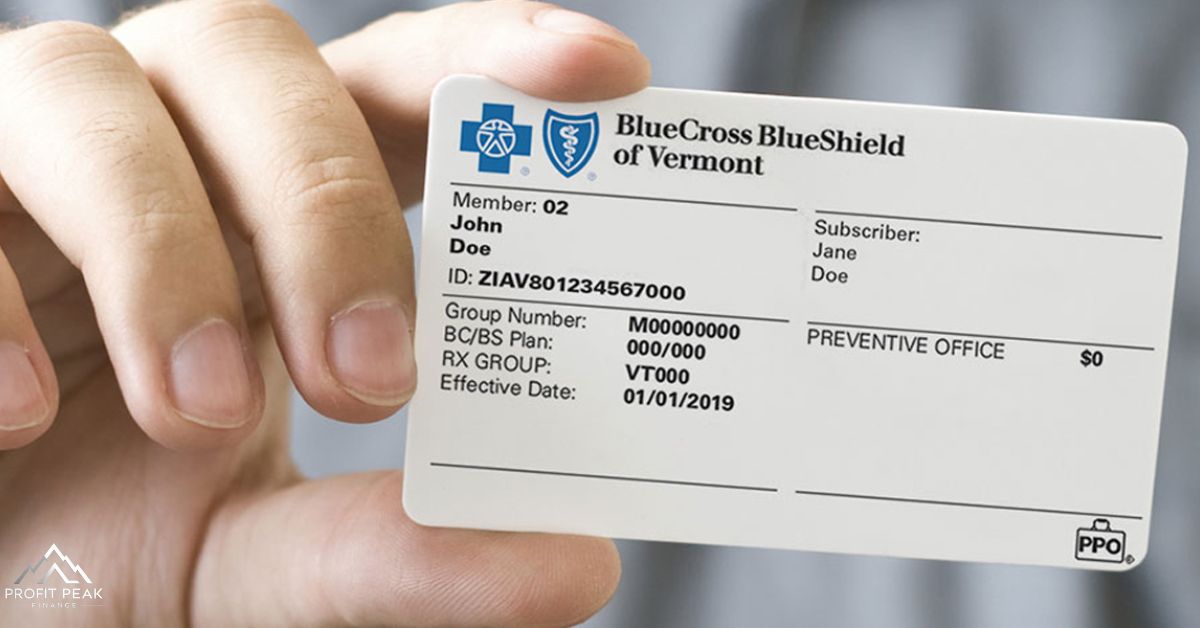Hearing loss can have a profound impact on your quality of life, affecting your ability to communicate, socialize, and even perform daily tasks. Unfortunately, the cost of hearing aids can be a significant barrier for many individuals, with prices ranging from hundreds to thousands of dollars per device. That’s where the right insurance coverage can make a world of difference, and BlueCross BlueShield (BlueCross BlueShield) offers various plans that may provide valuable assistance for those in need of hearing aids.
This comprehensive guide will delve into the details of BlueCross BlueShield hearing aid coverage, exploring what policyholders can expect, the limitations they may face, and strategies to maximize their benefits.
The Importance of Hearing Aid Coverage
According to the National Institute on Deafness and Other Communication Disorders (NIDCD), approximately 15% of American adults aged 18 and over report some degree of hearing loss. This statistic highlights the prevalence of hearing-related issues and underscores the importance of seeking proper treatment, often through the use of hearing aids.
However, the high costs associated with these devices can be a significant barrier for many individuals. The average price of a single hearing aid in the United States ranges from $1,000 to $4,000, with some premium models costing even more. Multiply that by two for those requiring bilateral (two-ear) devices, and the financial burden becomes even more substantial.
That’s where insurance coverage for hearing aids can make a significant difference, alleviating the financial strain and ensuring that individuals have access to the treatment they need.
BlueCross BlueShield’s Hearing Aid Coverage: The Basics
BlueCross BlueShield offers a range of health insurance plans, each with varying levels of coverage for hearing-related services and devices. It’s important to note that the specific details of hearing aid coverage can vary based on the plan you have and your location, as BlueCross BlueShield operates through a network of independent licensees across the country.
In general, however, many BlueCross BlueShield plans do provide some level of coverage for hearing aids, ranging from routine hearing exams and tests to partial or full coverage for the devices themselves.
What BlueCross BlueShield Plans Typically Cover for Hearing Aids

While the specifics may differ, here are some common areas of coverage that BlueCross BlueShield plans often include for hearing aids:
- Routine hearing exams and tests: Many plans cover the cost of routine hearing evaluations, which are essential for diagnosing hearing loss and determining the appropriate treatment.
- Portion of hearing aid costs: A significant number of BlueCross BlueShield plans provide coverage for a portion of the cost of hearing aids, often ranging from 50% to 80% of the total expense. Some plans may have a maximum coverage amount per ear or device.
- Hearing aid repairs and replacements: In addition to the initial purchase, some plans may also cover the cost of repairs or replacements for hearing aids, subject to certain conditions and limitations.
For example, the Blue Advantage PPO plan in Texas covers “one hearing aid per ear every 36 months, up to a maximum of $1,000 per ear.” Similarly, the Blue Elite PPO plan in Illinois provides coverage for “one hearing aid per ear every three years, up to a maximum of $2,500 per ear.”
It’s essential to review your specific plan details carefully to understand the extent of coverage and any applicable limitations or exclusions.
Recommended this : Banks That Finance Rebuilt & Salvage Titles
Restrictions and Limitations
While BlueCross BlueShield insurance can provide valuable assistance with hearing aid costs, there are often certain restrictions and limitations that policyholders should be aware of:
- Maximum coverage amounts: As mentioned earlier, many plans have maximum coverage limits per ear or device, typically ranging from a few hundred to a few thousand dollars.
- Waiting periods: Some plans may require you to be enrolled for a certain period (e.g., 12 months) before you become eligible for hearing aid coverage.
- In-network provider requirements: To receive coverage, you may need to use hearing healthcare providers and audiologists within the BlueCross BlueShield network.
- Exclusions: Certain plans may exclude coverage for hearing aids required for cosmetic reasons or due to injuries sustained during specific activities (e.g., sports or occupational accidents).
- Age restrictions: In some cases, hearing aid coverage may be limited to specific age groups, such as children or adults over a certain age.
It’s crucial to carefully review your plan’s documentation or consult with a BlueCross BlueShield representative to understand any applicable restrictions or limitations.
How to Maximize Your BlueCross BlueShield Hearing Aid Benefits
To ensure you get the most out of your BlueCross BlueShield hearing aid coverage, consider the following strategies:
- Review your plan details thoroughly: Take the time to read and understand your plan’s specific coverage for hearing aids, including any limitations, exclusions, or requirements.
- Compare in-network providers and costs: If your plan requires you to use in-network providers, research and compare the different options available to find the best fit for your needs and budget.
- Understand renewal schedules: Many plans have specific renewal periods for hearing aid coverage (e.g., every 3 or 5 years). Plan ahead and schedule necessary replacements or upgrades accordingly.
- Explore cost-sharing options: Some plans may offer cost-sharing options, such as deductibles or copayments, which can help reduce your out-of-pocket expenses.
- Seek assistance from a healthcare advocate: If you’re having trouble navigating your plan’s coverage or encountering any issues, consider seeking assistance from a healthcare advocate or customer service representative who can guide you through the process.
By taking a proactive approach and understanding the intricacies of your BlueCross BlueShield plan, you can maximize the benefits available to you and make the most of your hearing aid coverage.
Alternative Options for Hearing Aid Coverage

While BlueCross BlueShield plans can provide valuable assistance with hearing aid costs, it’s important to explore all available options to ensure you receive the care you need. Here are some additional sources of coverage to consider:
- Medicare: For individuals aged 65 and older or those with certain disabilities, Medicare may offer coverage for hearing aids and related services through various plans and supplements.
- Medicaid: Depending on your state’s Medicaid program and eligibility requirements, you may be able to receive coverage for hearing aids and related services.
- Discounted health plans: Some organizations and providers offer discounted health plans specifically focused on hearing care, which can provide access to discounted hearing aids and services.
- Veterans benefits: If you’re a veteran or the spouse of a veteran, you may be eligible for hearing aid coverage through the Department of Veterans Affairs (VA) healthcare system.
- State or local programs: Some states or local communities offer assistance programs or subsidies to help individuals with the cost of hearing aids and related services.
By exploring these alternative options in addition to your BlueCross BlueShield coverage, you may be able to find a comprehensive solution that meets your hearing healthcare needs while minimizing the financial burden.
Here’s a continuation of the comprehensive blog post on BlueCross BlueShield hearing aid coverage:
Recommended also this: Can You Get A Mortgage On A House With Foundation Problems In Florida
Case Studies: Real-Life Experiences with BCBS Hearing Aid Coverage
To better illustrate how BlueCross BlueShield’s hearing aid coverage works in practice, let’s explore some real-life case studies from policyholders:
Case Study 1: Mary, Age 72 (Blue Advantage HMO Plan)
Mary, a 72-year-old retiree living in Florida, had been struggling with gradual hearing loss for several years. After consulting with her primary care physician, she was referred to an in-network audiologist for a comprehensive hearing evaluation.
Under her Blue Advantage HMO plan, the initial hearing exam and testing were fully covered. The audiologist recommended a pair of behind-the-ear (BTE) hearing aids to address Mary’s moderate to severe hearing loss.
Mary’s plan covered 50% of the cost of the hearing aids, up to a maximum of $1,000 per ear. The total cost for the recommended devices was $4,800, meaning Mary’s out-of-pocket expense was $2,800 after her plan’s coverage.
While the out-of-pocket cost was still significant, Mary was grateful for the financial assistance provided by her BlueCross BlueShield plan, which made the hearing aids more affordable for her fixed retirement income.
Case Study 2: Jacob, Age 41 (Blue Elite PPO Plan)
Jacob, a 41-year-old professional living in California, had experienced sudden hearing loss in his right ear due to an injury sustained during a recreational activity. His Blue Elite PPO plan had a waiting period of 12 months before hearing aid coverage would kick in.
After the waiting period was over, Jacob visited an in-network audiologist and was fitted for a single, high-end hearing aid for his right ear. The total cost of the device was $3,200.
Fortunately, Jacob’s plan covered 80% of the cost, up to a maximum of $2,500 per ear. This meant that his out-of-pocket expense for the hearing aid was only $700, significantly less than the full retail price.
Additionally, Jacob’s plan included coverage for future repairs and replacements of the hearing aid, providing him with peace of mind and long-term support for his hearing healthcare needs.
These case studies demonstrate how BlueCross BlueShield’s hearing aid coverage can make a meaningful difference for policyholders, helping to alleviate the financial burden associated with these essential devices.
Navigating the Process: Tips from Experts

To ensure a smooth and successful experience when seeking hearing aid coverage through BlueCross BlueShield, it’s helpful to seek guidance from experts in the field. Here are some valuable tips from audiologists and healthcare advocates:
Communication is key. Don’t hesitate to reach out to your insurance provider’s customer service team or a dedicated healthcare advocate to clarify any uncertainties or ask questions about your plan’s coverage. – Dr. Sarah Thompson, Audiologist
Be proactive and plan ahead. Understand your plan’s renewal cycles for hearing aid coverage and schedule any necessary replacements or upgrades well in advance to avoid gaps in care. – Jessica Roberts, Healthcare Advocate
Keep detailed records of all communications, appointments, and expenses related to your hearing healthcare. This documentation can be invaluable if any issues or disputes arise with your insurance provider.- Dr. Michael Davis, Audiologist
By following expert advice and maintaining open communication with your insurance provider, audiologists, and healthcare advocates, you can navigate the process of obtaining BlueCross BlueShield hearing aid coverage more effectively and ensure you receive the support you need.
Prioritizing Your Hearing Health
Hearing loss can have a profound impact on your quality of life, affecting your ability to communicate, socialize, and even perform daily tasks. By understanding and taking advantage of the hearing aid coverage offered by BlueCross BlueShield, you can access the treatment and support you need to maintain your hearing health and overall well-being.
Remember, every individual’s situation is unique, and it’s crucial to review your specific plan details, explore all available options, and seek guidance from experts in the field. With the right approach and proactive planning, you can maximize your BlueCross BlueShield hearing aid coverage and regain the gift of clear, unimpeded hearing.












